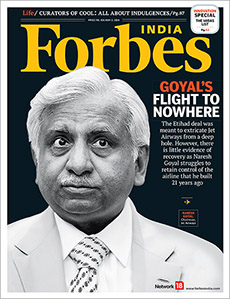
Flights Of Fancy
No industry has probably destroyed more value than Indian civil aviation, thanks to bad policy and even worse business sense
Consider these names: East West, ModiLuft, Damania, NEPC, Paramount. If you have recently taken to the skies and these names don’t ring a bell, let’s add a few more names. Deccan, Sahara and Kingfisher. Aha! We are talking about airlines that have gone out of business or got taken over. Like everywhere else, Indian aviation has been a graveyard for private and public sector airlines over the last two decades. For every major airline that went under after serious effort, there are two more minor ones that flashed by like shooting meteors.

No industry has probably destroyed more value than Indian civil aviation, thanks to bad policy and even worse business sense. Even in an industry that saw irrational entry barriers, limited competition and crony policy-making, the surviving players have barely been able to keep their heads above water, leave alone make profits. In this issue of Forbes India, we chart the declining fortunes of Jet Airways, one of the pioneers of private civil aviation in India, whose promoter Naresh Goyal is thrashing about in turbulent airwaves to save his airline from nosediving. Temporarily rescued by Etihad, Jet’s operations in India have now been partly reduced to playing feeder to Etihad, even while its debt burden remains humongous.
What went wrong? Quite clearly, Goyal got his strategy mixed-up in the second half of the last decade when low-cost carriers challenged his supremacy. Goyal tried consolidation by buying Air Sahara, but the legacy of that purchase has only made things worse for him. By running three different brands—Jet, Jet Konnect and JetLite (former Air Sahara)—Goyal simply confused the flyer, while his competitors ran away with his customers. Kingfisher made much the same mistakes and fell between two stools—the full-service Kingfisher and the low-cost Kingfisher Red.
The impending decline of Goyal is gut-wrenching, for his name is almost synonymous with the Indian private airline industry. In a milieu where owning an airline was more like marrying a trophy spouse, he was the one serious player who gave it his all. One should, still, not write him off just yet. But the rest of the world surely is beginning to pen his business obit.
Best,
R Jagannathan
Editor-in-Chief, Forbes India
Email: r.jagannathan@network18online.com
Twitter id: @TheJaggi
(This story appears in the 02 May, 2014 issue of Forbes India. To visit our Archives, click here.)
-
 Rishi
RishiJet owner was to aviaiton what Dhirubhai was to textiles. He built his business on crony regulations built to destroy the national carriers of India, aided and abetted by scores of policy makers who continue to play havoc with the industry and poor employees. Take the case of bankrupt airlines that litter Indian lands. It is a very poor observation that Indian carriers live on government doles, when a cursory analysis of Indian aviation and economy shows the vast contribution of Indian Airlines and Air India on the national and international landscape. None ever comments on the economic value these two great organisations brought to the land and the reach of India globally. A Trillion dollar economy resides with overseas Indians, Some of it was made possible by the air connectivity as is the Trillion dollar economy of India.
on Apr 20, 2014














